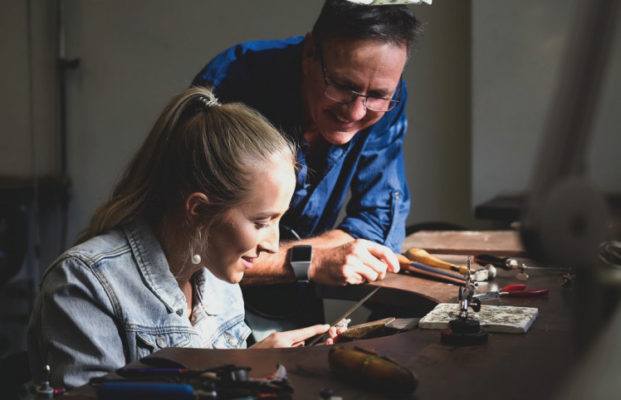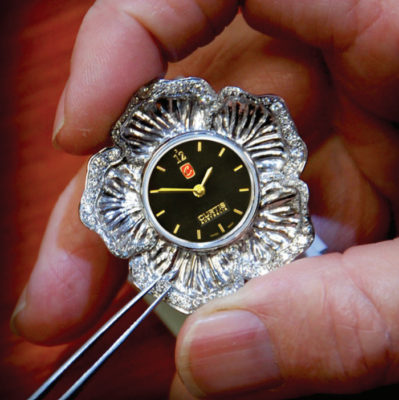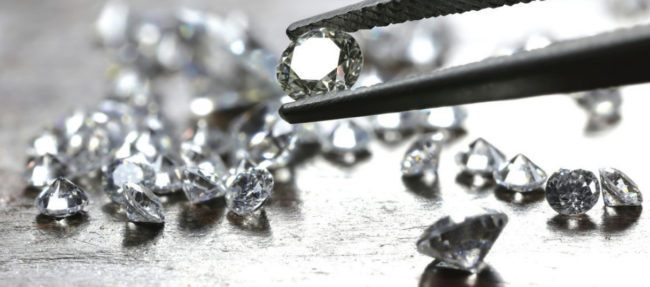What does the future of Australia’s jewellers and gemmologists look like? Jewellery is an industry with an alarming disproportionate representation in comparison to other major trades, yet jewellery will always remain a highly sought-after item in the retail scene. Here we spoke to four experts in jewellery and gemmology to find out the current state and outlook for our current apprentices and future jewellers/gemmologists.
So much work, so few tradespeople

While there will always be fiancés needing engagement rings, mothers needing doting with something shiny and sentimental on Mother’s Day, or pawnbrokers and investors needing stones graded and valued, it seems the number of tradespeople required to perform the specialised craft of jewellery manufacture and precious stone grading will always be inadequate to meet the demand. At least that’s the consensus among our contributors. Founder and Master Jeweller at Jewellery Training Solutions Peter Keep (who also regularly produces editorial content for the magazine) said there is certainly a shortage of qualified competent jewellers. “Industry dictates the number of apprentices needed and most bench jewellers will tell you that currently they are snowed under with bench work,” he said. “Although there’s no shortage of potential apprentices, there is a shortage of suitable positions for apprentices.” He said that the demand is there, and apprentice numbers have steadily been on the rise over the past three years, but employers are still reluctant to take on apprentices because they have a combination of no time available to train, not enough support, and/or no confidence in the training provider.

“My Jewellery Training Solutions online training service offers another pathway to train to be a jeweller.” As for the gemmologists, federal president of the Gemmological Association of Australia Katrina Marchioni, expressed the skills shortage is just as dire in gemmology as it is in jewellery manufacture. “Retail jewellers would benefit greatly from having a gemmologist in every store, for testing clients’ gemstones as well as stock items to check for lab-made or treated gems; it’s a small investment to make that can potentially save a business thousands of dollars down the track,” she said. Katrina also said that “as an industry the trust of the consumer is so important and having a qualified gemmologist on staff does go a long way to building that trust and confidence between our industry and the consumer”. She also noted that “with the GAA gemmology diploma and the post-nominal FGAA (Fellow of the Gemmological Association of Australia) being well recognised for its high academic standard worldwide, we are a wonderful, local resource for those looking to become an industry professional”.
From the industry network perspective, managing director of Jewellery Industry Network Laura Moore concurred that there are certainly not enough jewellery students or apprentices in the market or approaching the market at the moment, nor have there been for some time. “The jewellery industry has seen a skills shortage for many years, especially in certain disciplines of skill sets, but with the strong growth of handmade jewellery during the COVID period, this has been exacerbated,” she said.
The state of industry vocational education
As for future jewellery and gemmology talent coming in, feedback was mixed regarding student commencement and attrition rates at TAFE and other government accredited vocational education institutions. Katrina said that the numbers of gemmology students at the GAA haven’t changed much over the past years however, numbers did drop with COVID. Practical classes are very difficult to do on line successfully, she added. She said there is a small dropout rate, but students are told how much time they need to put aside each week and informed that this time is a commitment. “It is an extensive course and recognised as one of the world’s leading gemmological courses,” she said. Laura said the state of the industry courses which are state/federal government-run seem to fluctuate, especially in certain states. “When student intake is low, it becomes unfeasible for some states to run jewellery manufacturing courses,” she said.

Artist Samantha Kelly
Peter was a jewellery lecturer at the Central Institute of Technology in WA from 2007 to 2019, and he described how apprentice numbers fell from 42 apprentices when he started, to just 6 when he concluded. Plus he saw a similar precipitous drop in year-over year apprentice numbers was also occurring in the regions, and in many other trades. “It may just be timing, but I think that the COVID crisis had a part to play in re-energising the bespoke side of the industry, and combined with the state and federal governments’ new initiatives that help to alleviate the financial pressure of employing an apprentice, the numbers in WA have risen to around 20,” he said. “When it comes to apprentice attrition, there is general understanding that an apprentice will cost you money in year one, break even in year two and begin to return the investment by year three. “In my time I found that between five percent to ten percent didn’t get to year two.”
Offering an alternative from traditional courses, Peter’s JTS educational platform offers world-renowned training and learning where a budding jeweller can achieve their qualifications, the professional jeweller can hone their skills and the hobbyist can become competent. “At present I have over 500 students worldwide who are working through the training program.” Trevor Brown is Bespoke Product Liaison from Curtis Australia, and he said that the traditional apprenticeship route in which apprentice jewellers are employed and released for trade school blocks is a valuable one, but there probably needs to be more consultation about modules and their content. “Also possibly greater feedback from course tutors on how the apprentice is progressing, and on what aspects of training need to be focused on while in the workplace,” he said.
Current support on offer for apprentices and their employers
Whilst jewellery and gemmology are often neglected in terms of government assistance compared to their other trade counterparts, Peter said that thanks to very generous state and federal government incentives, there’s never been a better time to employ an apprentice.

“At time of writing, WA business owners that employ an apprentice can have half of their first-year apprentice salary paid for under the BAC (Boosting Apprenticeship Commencements) scheme,” he said. “There are also other cash incentives offered by the federal Government.” He said that industry support is more difficult as it is a small industry with limited resources compared to trades such as automotive and building which are supported by huge corporations that have a vested interest. “Our industry doesn’t have huge corporations with buckets of money… but maybe there’s scope for some kind of collective support.” Director of Curtis Australia, Heather Curtis agreed that the BAC and CAC (Completing Apprenticeships Commencements) subsidies from the federal government have helped, although they come with a lot of paperwork. From Laura’s perspective, there have been some incentives for businesses to take on apprentices, but not enough to bridge the gap between the investment needed for the employer and the student. “What is required, is for the industry to have solid statistics and to show its national contribution to the economy,” she said.

“The government could do a lot to ensure that Australia’s manufacturing sector is strong, but the concern is that for all industries that manufacture products here, the level of support needed hasn’t been seen.” Katrina said that the GAA has scholarships and prizes on offer for the best and most promising gemmology students in a variety of categories. The GAA is a non-profit organsiation and recognised as a charity and thus GST is not charged on the courses.

Encouraging new apprentices and keeping them in the trade
Katrina said that to encourage more prospective students to take up gemmology, word of mouth is the GAA’s best advertisement. “Also, just promote the people in the industry to be the best we can be and enjoy the wealth of knowledge, inspiration and enjoyment higher education can offer… knowledge is a powerful thing,” she said. As Peter noted earlier, he doesn’t believe there’s a shortage of potential apprentices, but there is difficulty for these potential apprentices to find a job. “In an ideal world, there would be a dedicated, fully-funded national jewellery training program where students can enrol into a pre-apprentice course where they can try the trade and assess if that’s a career path that they really want and to see if they have the potential to become a jeweller,” he said. He said this model would mean the first year of training would be completed, and employers could then cherry-pick from the best. During his time at TAFE, this was something he pushed for, and with industry support, managed to get a fully funded pre-apprenticeship course up and running which proved quite successful. “However, it was cancelled due to its status as low priority, and so the funding was cut.” Peter also served on the JAA board for several years during which time he lobbied the government to have the trade included on the skills needs list. “Being included on the skills needs list may have helped to keep the pre-apprentice course going.”
The future for jewellery and gemmology education and training
When probed on the outlook for jewellery education and training, Peter believed the signs were looking very positive for the industry, as he’s seen a recent surge in the creative side of the industry, access to industry-relevant training for dedicated students to take their craft as far as they want to, and a retail front no longer being necessary for selling jewellery. “With the power of social media and online resources, a lot of students have turned their hobby into a thriving business and operate successful virtual shops selling bespoke jewellery,” he said. “So yes, I am very positive about the future, especially for unique handmade jewellery.” Laura believes that with some proper planning, hard work and commitment, the future is very bright. “There is a strong future for the manufacturing sector here especially as digital enables Australian jewellers to sell overseas,” she said. “However, in order for us to maintain this success and the quality required for Australian made pieces, then the industry must act quickly to build on the next generations of jewellers.”
Read below for related stories: